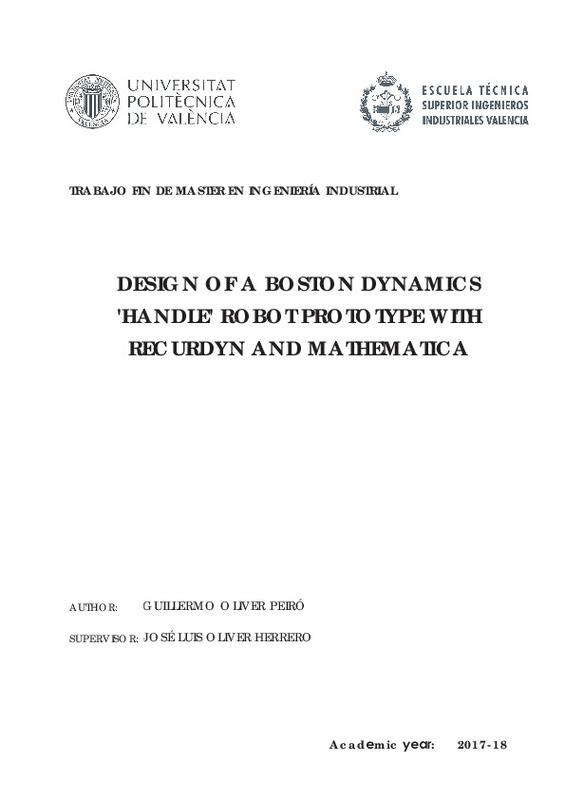- RiuNet repositorio UPV
- :
- Docencia
- :
- Trabajos académicos
- :
- ETSII - Trabajos académicos
- :
- Ver ítem
JavaScript is disabled for your browser. Some features of this site may not work without it.
Buscar en RiuNet
Listar
Mi cuenta
Estadísticas
Ayuda RiuNet
Admin. UPV
Desde el lunes 3 y hasta el jueves 20 de marzo, RiuNet funcionará en modo de solo lectura a causa de su actualización a una nueva versión.
Diseño de un Prototipo del Robot Handle" de Boston Dynamics con Recurdyn y Mathematica."
Mostrar el registro completo del ítem
Oliver Peiró, G. (2018). Diseño de un Prototipo del Robot Handle" de Boston Dynamics con Recurdyn y Mathematica.". http://hdl.handle.net/10251/110432
Por favor, use este identificador para citar o enlazar este ítem: http://hdl.handle.net/10251/110432
Ficheros en el ítem
Metadatos del ítem
| Título: | Diseño de un Prototipo del Robot Handle" de Boston Dynamics con Recurdyn y Mathematica." | |||
| Autor: | Oliver Peiró, Guillermo | |||
| Director(es): | ||||
| Entidad UPV: |
|
|||
| Fecha acto/lectura: |
|
|||
| Resumen: |
[ES] Un modelo bidimensional simplificado del robot Handle de Boston Dynamics será desarrollado
utilizando herramientas computacionales de amplia aplicación en la industria.
Como punto de partida, se ensamblará un ...[+]
[EN] A simplified 2-dimensional model of Boston Dynamics' Handle robot will be developed using
industry-leading computational tools.
As a starting point, a virtual model will built and designed in the SolidWorks ...[+]
|
|||
| Palabras clave: |
|
|||
| Derechos de uso: | Reserva de todos los derechos | |||
| Editorial: |
|
|||
| Titulación: |
|
|||
| Tipo: |
|
recommendations
Este ítem aparece en la(s) siguiente(s) colección(ones)
-
ETSII - Trabajos académicos [10539]
Escuela Técnica Superior de Ingenieros Industriales







